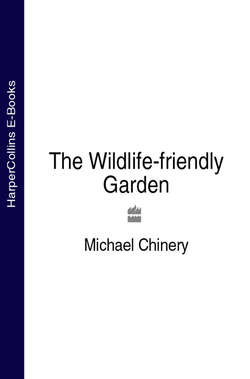Читать книгу The Wildlife-friendly Garden - Michael Chinery - Страница 7
Wildlife-friendly gardens
ОглавлениеGardening for wildlife involves creating an approximation to one or more natural habitats that will be acceptable to birds and other wild creatures. It does not mean, however, giving the whole garden over to nature. You can continue to grow all your favourite flowers and vegetables in a wildlife garden.
Although a large garden can obviously support more plant and animal life than a small one, size is not that important. Even a small garden can contain several valuable wildlife habitats, such as a hedge, a small spinney or shrubbery, a pond and a grassy bank. It is what you plant in your garden that matters. Cultivated varieties and exotic plants certainly have a role in adding colour and excitement to a garden, but to be really wildlife friendly you do need to grow a selection of native shrubs and other plants. These are the species on which our native insects have evolved, and if you provide food for the insects, then you will indirectly feed many of our garden birds as well.
Having created habitats for the insects and birds, you will need to minimize any disturbance. So be a little less enthusiastic with the lawn mower and the hedge trimmer. Does your lawn really need to look like a bowling green, and does it matter if the hedge is a bit rough around the edges? Don’t be tempted to dead-head all of your plants; this might encourage a longer flowering season but it does deprive birds and insects of food and shelter. Bare soil needs weeding, so cover your garden with as much vegetation as you can; this will keep down the weeds and also give the birds a happy hunting ground. You might well find that wildlife-friendly gardening is gardener friendly as well!
Michael Chinery
The rough grass at the base of the wall in no way detracts from the appearance of this well-managed wildlife garden.
